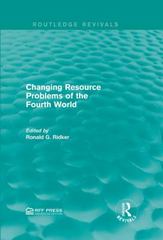Question
Read Illustration 6.3 on page 178 of our textbook. It deals with Vanguard Asset Management's history and culture. Illustration 6.3The Bogleheads and Vanguard Asset Management
- Read Illustration 6.3 on page 178 of our textbook. It deals with Vanguard Asset Management's history and culture.
Illustration 6.3The Bogleheads and Vanguard Asset
Management
Vanguard's culture of low-cost investing is supported by many elements of the cultural web
Jack Bogle, founder of Vanguard Asset Management in 1974, tells a story about a summer job as a messenger at a Wall Street broker when he was a student. One of the other messengers said to him: 'Let me tell you all you need to know about the investment business.' I said, 'What's that?' He said, 'Nobody knows nuthin'.' It was on this principle that investment professionals know nothing that Bogle built what became the largest mutual fund in the world.
Bogle developed a model of index funds in which, instead of trying to pick winners, stocks were chosen simply to match the various stock market indices (for example, the S&P 500). As an investor, he did not claim to know more than other investors. All he did was make sure that his portfolio exactly reflected whatever index he was aiming to follow. There were none of the costs of stock-picking, investment research or frequent trades. His funds would never beat the index, but, unlike the vast majority of funds at the time, his expenses were significantly lower. Moreover,Bogle chose an unusual financial structure for Vanguard: it was owned by its own funds and, as a result, ultimately by the customers investing in the funds. This meant that there were no profits to be paid out to outside investors. Moreover, Bogle refused to pay fees to investment advisers for selling Vanguard products: price and performance should be enough to attract customers. The result of these policies was what Vanguard describes as 'a culture of low-cost investing'.
A Vanguard index fund would charge investors fees of only 0.2 per cent of their investment, against fees approaching 2.0 per cent for an active stock-picker. Between 1983 and 1999, a Vanguard index fund tracking the S&P 500 would turn $10,000 into $81,900, while an active stock-picking fund, allowing for the extra charges, would only make $62,700. Jack Bogle's philosophy eventually attracted 25 million retail American investors, many of them enthusiastically describing themselves as 'Bogleheads'. Each year, these Bogleheads mee at Vanguard's Pennsylvania headquarters to, as they call it, 'visit their money'. Even in his 80s, Jack Bogle would attend the Boglehead conferences to give his investment advice. Vanguard's headquarters has someunusual features. There was aprominent mural reproducing a famous pictureof the 1798 Battle of the Nile, in which Nelson's ship the Vanguard had led the British fleet to a decisive victory over Napoleon. The Vanguard is depicted firing upon theFrench ship La Fidelit, a reference to Bogle's great active fund rival Fidelity. All 11 buildings on the Vanguard headquarters arenamed after Nelson's ships and the restaurant is called the 'galley'.To emphasise the mutual nature of relationships, Bogle insisted that Vanguard employees should be called 'crew'.The Vanguard crew are chosen carefully. For example, when Vanguard began to expand in the United Kingdom, the local head Thomas Rampulla interviewed every one of the first 250 staff personally: Bill McNabb, Vanguard's CEO from 2008, described Rampulla as Vanguard's 'culture carrier'.Employees are under careful performance management,using portfolio attribution analysis to precisely measure their results against relevant indices: low performers are asked to 'walk the plank'. Despite the continuing Boglehead adoration of Jack Bogle, who still works in a research role at the headquarters and is sometimes critical of Vanguard's recent policies, Bill McNabb is firmly in control. While his predecessor as CEO fought bitterly with Bogle when the latter retained the executive chairmanship position, McNabb combines the roles of chief executive and company chairman, even though this contradicts the corporate governance arrangements Vanguard preaches for the companies it invests in. McNabb's remuneration is secret and he is politely dismissive of Bogle's criticisms.
- Working with your group members, complete a cultural analysis of the company using the Cultural Web model. For each element, find an example from Illustration 6.3. Summarize the results in a table.
Cultural Web model: Figure 6.6/169
- Create one submission. Each group member should upload a copy of the submission to the Bb assignment dropbox, if they contributed meaningfully to the assignment.
A#4: Culture Mapping using the Cultural Web Model
Instructions:
- Read Illustration 6.3 on page 178 of our textbook. It deals with Vanguard Asset Management's history and culture.
- Working with your group members, complete a cultural analysis of the company using the Cultural Web model. For each element, find an example from Illustration 6.3. Summarize the results in a table.
The Cultural Web Elements of Paradigm of the case, "The Bogleheads and Vanguard Asset Management" (Johnson- Whittington-Scholes-Angwin-Regner, Page.178, Exploring Strategy)
Step by Step Solution
There are 3 Steps involved in it
Step: 1

Get Instant Access to Expert-Tailored Solutions
See step-by-step solutions with expert insights and AI powered tools for academic success
Step: 2

Step: 3

Ace Your Homework with AI
Get the answers you need in no time with our AI-driven, step-by-step assistance
Get Started


